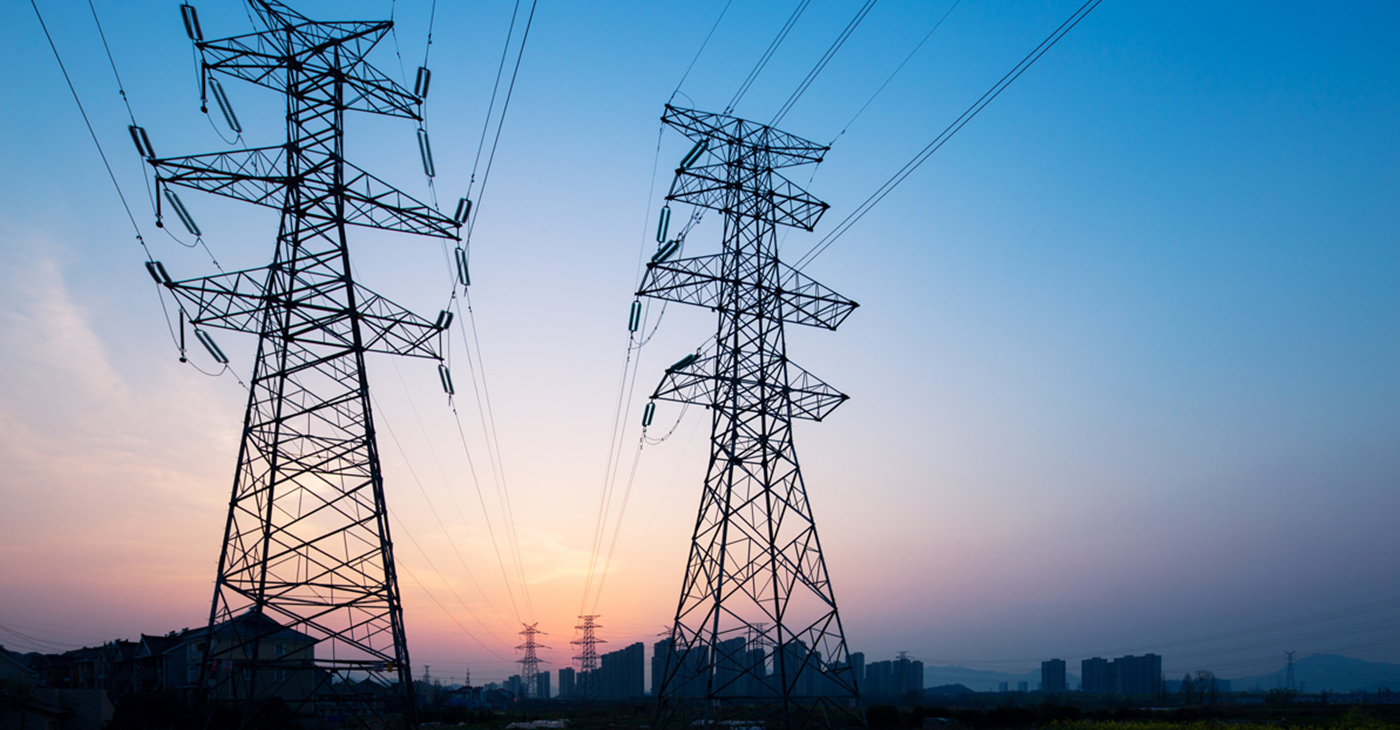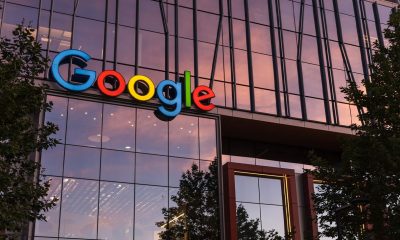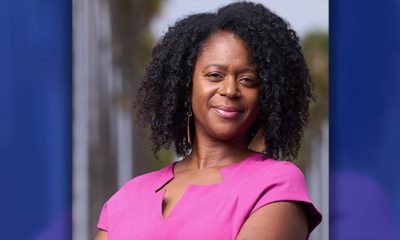Technology
Google is Starting Small, Thinking Big with ‘Project Fi’

In this April 24, 2015 photo, Nick Fox, Vice President for Communications Products at Google, prepares a presentation on Project Fi, in Mountain View, Calif. Project Fi is Google’s recently launched attempt to usher in new ways to keep smartphones online while lowering the cost for streaming video, listening to music, getting directions and searching for information. (AP Photo/Marcio Jose Sanchez)
MICHAEL LIEDTKE, AP Technology Writer
MOUNTAIN VIEW, Calif. (AP) — Google wants the wireless services that connect mobile devices to digital content to be cheaper and more reliable.
The reason has as much to do with the pursuit of profit as with trying to make smartphones more useful. More time spent using Google’s dominant search engine or watching videos on its popular YouTube site translates into more opportunities for the company to show its moneymaking ads.
Enter “Project Fi,” the Internet company’s recently launched attempt to usher in new ways to keep smartphones online while lowering the cost for streaming video, listening to music, getting directions and searching for information.
“Wireless connectivity has become so essential that it’s kind of like our lifeblood,” says Nick Fox, the Google Inc. executive overseeing Project Fi. “This gives us a playground where we can try things out.”
In a break from the status quo, Project Fi will cost just $20 for basic service and then only charge for the amount of data consumed over cellular networks that Google is leasing from T-Mobile and Sprint. Most plans charge a flat rate under metered plans that limit customers to a specific amount of data.
Google’s service is also promising to automatically switch customers to publicly available Wi-Fi networks to avoid incurring charges for using data on the cellular networks.
Here are some key things to know about Project Fi culled from a recent interview with Fox at Google’s Mountain View, California, headquarters.
___
STARTING SMALL, THINKING BIG
Although Fox wouldn’t disclose how many customers Project Fi will accept, it’s clearly going to be a relatively small pool of U.S. consumers at the outset. Getting on the wireless service requires a Nexus 6 smartphone, a model made by Motorola for Google as a showcase for how it would like its services to work with its Android operating system. Nexus 6 owners also need an invitation to subscribe to Project Fi (requests for invitation can be made here: https://fi.google.com/signup).
Google, though, is hoping Project Fi reshapes the market. If some of its technological features work well, Google will implant them into future updates of Android so they are available on the hundreds of millions of other devices running on the software, Fox said.
After spending more than two years developing Project Fi, Google is also counting on other wireless carriers copying its ideas, particularly on pricing.
“We are focused more on Android where we can have the most influence, but to the extent that the ideas take off and go broader than Project Fi, that’s great for users,” Fox said.
Google ultimately just wants people to spend more of their lives online because when that happens, it brings more traffic to its search engine, YouTube and other services such as Gmail and maps.
___
BILLING BY MEGABYTE
Google’s pricing system seems the feature most likely to shake up the wireless market. Project Fi only charges subscribers for the precise amount of cellular data used, an approach that Google came up with after its internal studies concluded most people consume less than 2 gigabytes a month yet often pay for much higher limits.
The solution: Project Fi subscribers will pay just a penny per megabyte of cellular data. That means 501 megabytes — a little over half a gigabyte — would cost just $5.01 even if a Project Fi user had signed up for a 2 gigabyte monthly plan listed at $20.
___
SEAMLESS WI-FI
Google knows a lot about the strength of public Wi-Fi networks because it gathers the information when people connect to it services. Project Fi is relying on this intelligence to automatically switch its users from a cellular tower to a free Wi-Fi system with a signal strong enough to stream video and music, another effort to save people money
This could mean a smartphone will shift to a Wi-Fi network downloading at 10 megabits, even if a T-Mobile or Sprint network is available at 30 megabits, Fox said, because the slower speed is still strong enough for a solid connection.
The Wi-Fi switch won’t automatically occur, though, on free networks in businesses and airports that require a user to accept terms of service or perform some manual acknowledgement.
In an effort to protect passwords and personal data, Project Fi creates a private transmission channel while its subscribers are using a publicly accessible Wi-Fi system.
____
BRIDGING DEVICES
Project Fi will store subscriber phone numbers in Google data centers so that they may be accessed on other devices besides smartphones. That means a Project Fi user will be able to send and receive texts, or make or receive calls, on their personal computers, tablets or even other smartphones besides their own, as long as they logged in.
____
NETWORK JUMPING
Project Fi also is promising to automatically decide whether its subscribers are better off on either T-Mobile’s or Sprint’s cell network, no matter where they are. Google developed an identification, or SIM, card that can store 10 different network profiles to make it possible to toggle between networks run by two different carriers.
Copyright 2015 The Associated Press. All rights reserved. This material may not be published, broadcast, rewritten or redistributed.
Antonio Ray Harvey
Feds: California Will Be Home to New National Semiconductor Technology Center
California was chosen by the U.S. Department of Commerce (Commerce) and Natcast, the operator of the National Semiconductor Technology Center (NSTC) to be home to the headquarters for the National Semiconductor Technology Center – as part of the Biden-Harris Admin’s CHIPS and Science Act. The CHIPS for America Design and Collaboration Facility (DCF) will be one of three CHIPS for America research and design (R&D) facilities and will also operate as the headquarters for the NTSC and Natcast.

By Antonio Ray Harvey
California was chosen by the U.S. Department of Commerce (Commerce) and Natcast, the operator of the National Semiconductor Technology Center (NSTC) to be home to the headquarters for the National Semiconductor Technology Center – as part of the Biden-Harris Admin’s CHIPS and Science Act.
The CHIPS for America Design and Collaboration Facility (DCF) will be one of three CHIPS for America research and design (R&D) facilities and will also operate as the headquarters for the NTSC and Natcast.
“We are thrilled that the Department of Commerce and Natcast chose to locate this critically important facility in Sunnyvale, the heart of the Silicon Valley, alongside the world’s largest concentration of semiconductor businesses, talent, intellectual property, and investment activity,” said Dee Dee Myers, Senior Economic Advisor to Gov. Gavin Newsom and Director of the Governor’s Office of Business and Economic Development (GO-Biz). “The Newsom Administration and our partners across the industry know how important it is to shorten the timeframe from R&D to commercialization.”
According to GO-Biz, the DCF is expected to direct over $1 billion in research funding and create more than 200 employees in the next decade. The facility will serve as the center for advanced semiconductor research in chip design, electronic design automation, chip and system architecture, and hardware security. The CHF will be essential to the country’s semiconductor workforce development efforts.
As detailed in the released NSTC Strategic Plan, the DCF will suppress the obstacles to “semiconductor prototyping, experimentation,” and other R&D activities that will enhance the country’s global power and leadership in design, materials, and process innovation while enabling a vigorous domestic industr“Establishing the NSTC headquarters and design hub in California will capitalize on our state’s unparalleled assets to grow a highly skilled workforce and develop next-generation advancements,” stated U.S. Sen. Alex Padilla (D-Calif.). “This CHIPS Act funding will propel emerging technologies and protect America’s global semiconductor leadership, all while bringing good-paying jobs to our state.”
Community
Advanced Conductors Provide Path for Grid Expansion
Utility companies in the United States could double electric transmission capacity by 2035 by replacing existing transmission lines with those made from advanced materials, according to a new study published Monday in the Proceedings of the National Academy of Sciences.

By Matthew Burciaga
UC Berkeley News
Utility companies in the United States could double electric transmission capacity by 2035 by replacing existing transmission lines with those made from advanced materials, according to a new study published Monday in the Proceedings of the National Academy of Sciences.
Led by Duncan Callaway, professor and chair of the Energy and Resources Group (ERG), and Amol Phadke, an affiliate and senior scientist at the Goldman School of Public Policy, the first-of-its-kind study details a faster and more cost-effective way to expand the grid and connect the more than 1,200 gigawatts of renewable energy projects awaiting approval. The analysis was first published last December as a working paper by the Energy Institute at Haas and has been covered by the New York Times, the Washington Post, Heatmap News, and other news outlets.
“Expanding transmission capacity is critical to decarbonization, and we sought to study ways to build it faster and cheaper,” said Callaway.
It currently takes 10 to 15 years to build a new power line and the U.S. is building transmission lines at a lower rate than it was in the past decade. Without sufficient capacity, renewable energy projects often sit in limbo for years as transmission operators study what upgrades—if any—are needed to accommodate the increased loads.
The authors modeled various scenarios to determine if replacing existing transmission conductors with those made with advanced composite-core materials—a process known as reconductoring—could provide a pathway to faster grid expansion.
Several reconductoring projects have been initiated in Belgium and the Netherlands, and utility companies in the U.S. have used the material to string transmission lines across wide spans like river crossings. That technology, however, has not made its way to the majority of overhead power lines that feed residential and commercial customers.
“As we learned more about the technology, we realized that no one had done the detailed modeling needed to understand the technology’s potential for large-scale transmission capacity increases,” said Phadke.
Based on the authors’ projections, it is cheaper—and quicker—for utility companies to replace the 53,000 existing transmission lines with advanced composite-core materials than it is to build entirely new transmission lines.
They assert that doing so would reduce wholesale electricity costs by 3% to 4% on average—translating to $85 billion in system cost savings by 2035 and $180 billion by 2050.
“The level of interest we’ve received from federal and state agencies, transmission companies and utilities is extremely encouraging, and since our initial report, the Department of Energy has committed hundreds of millions of dollars to reconductoring projects,” said co-author Emilia Chojkiewicz, a PhD student in ERG and an affiliate of the Goldman School of Public Policy. “We are looking forward to learning about these projects as they unfold.”
Additional co-authors include Nikit Abhyankar and Umed Paliwal, affiliates at the Goldman School of Public Policy; and Casey Baker and Ric O’Connell of GridLab, a nonprofit that provides comprehensive technical grid expertise to policy makers and advocates.
Black History
A Life of Inventions: Engineer and Physicist George Alcorn
George Edward Alcorn Jr. was born on March 22, 1940, in Indianapolis. Growing up in a family that valued education, Alcorn developed an early love for science and mathematics. He excelled in school, and attended Occidental College in California, where he earned a bachelor’s degree in physics in 1962. He received a master’s degree in nuclear physics in 1963 and a Ph.D. in atomic and molecular physics in 1967 at Howard University.

By Tamara Shiloh
George Edward Alcorn Jr. was born on March 22, 1940, in Indianapolis.
Growing up in a family that valued education, Alcorn developed an early love for science and mathematics. He excelled in school, and attended Occidental College in California, where he earned a bachelor’s degree in physics in 1962. He received a master’s degree in nuclear physics in 1963 and a Ph.D. in atomic and molecular physics in 1967 at Howard University.
Alcorn began his career in developing scientific technology in private industries, starting a career as a physicist for IBM. His career took off when he joined several prestigious companies and research institutions, such as the Aerospace Corporation, where he developed important technologies for spacecraft. In 1978, he accepted a position at NASA’s Goddard Space Flight Center, where he worked for the remainder of his career. There, he developed technologies for space stations and private institutions across the nation, becoming a key figure in the field of physics and space exploration.
Alcorn is well known for his groundbreaking work on X-ray spectrometers. An X-ray spectrometer is a device used to identify different elements in materials by analyzing the X-ray wavelengths they emit. His improvements allowed the instrument to detect X-rays with greater accuracy and efficiency. This invention has been critical for NASA’s space missions, aiding in the analysis of planetary atmospheres and surfaces, including Mars and other planets in our solar system.
He also contributed to the development of plasma etching, a process used in manufacturing microchips for computers and electronics. His work in this area advanced semiconductor technology, which powers everything from smartphones to satellites.
Another accomplishment was the development of new technologies used in the Freedom space station in partnership with space agencies in Japan, Canada and Europe, though their projects never made it to space.
Throughout his career, Alcorn received several awards and honors, including NASA’s Inventor of the Year Award in 1984. In 2010, he received the highest honor from NASA’s Goddard Space Flight Center. In 2015, Alcorn was inducted into the National Inventors Hall of Fame for his invention of the imaging X-ray spectrometer.
In addition to his work in the lab, Alcorn dedicated much of his time to teaching and mentoring young scientists. As one of the few African American scientists working in advanced fields like physics and space exploration, he has been an inspiration to young people, especially those from underrepresented groups in STEM (science, technology, engineering, and mathematics). He taught at Howard University and worked to encourage more African Americans to pursue careers in science and engineering.
George is quoted as stating, “The big thing about being in science and engineering is that if you have a good, interesting project going, work is not coming to work, it’s coming to an adventure.”
George Edward Alcorn passed away June 19, 2024.
-

 Alameda County4 weeks ago
Alameda County4 weeks agoAlameda County District Attorney Pamela Price Announces $7.5 Million Settlement Agreement with Walmart
-

 Activism3 weeks ago
Activism3 weeks ago‘Jim Crow Was and Remains Real in Alameda County (and) It Is What We Are Challenging and Trying to Fix Every Day,’ Says D.A. Pamela Price
-

 Bay Area3 weeks ago
Bay Area3 weeks agoIn the City Attorney Race, Ryan Richardson Is Better for Oakland
-

 Activism3 weeks ago
Activism3 weeks agoOakland Post: Week of October 30 – November 5, 2024
-

 Alameda County3 weeks ago
Alameda County3 weeks agoD.A. Price Charges Coliseum Flea Market Vendors in Organized Retail Theft Case
-

 Activism3 weeks ago
Activism3 weeks ago‘Criminal Justice Reform Is the Signature Civil Rights Issue of Our Time,’ says D.A. Pamela Price
-

 Activism3 weeks ago
Activism3 weeks ago“Two things can be true at once.” An Afro-Latina Voter Weighs in on Identity and Politics
-

 Arts and Culture3 weeks ago
Arts and Culture3 weeks agoMacArthur Fellow Jericho Brown’s Poetry Reflects Contemporary Culture and Identity

























































